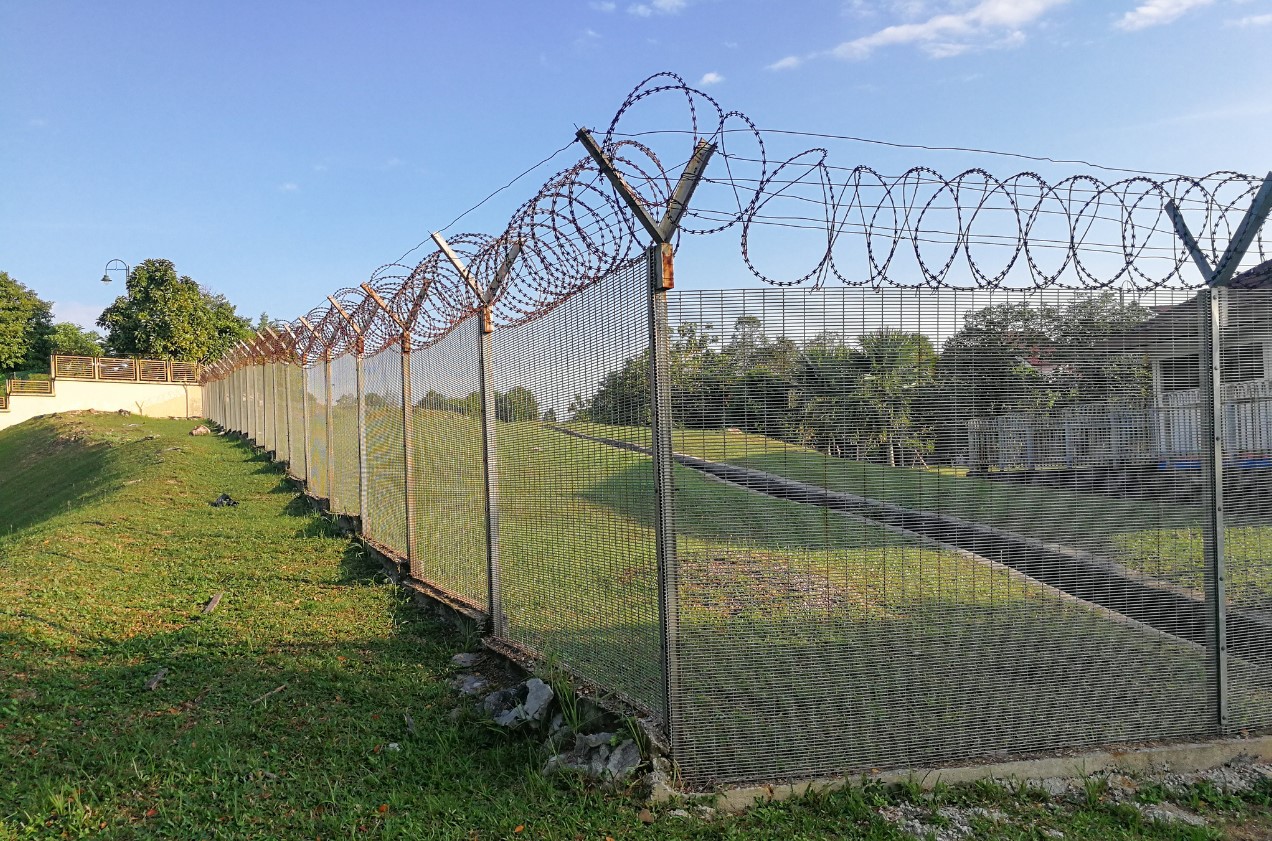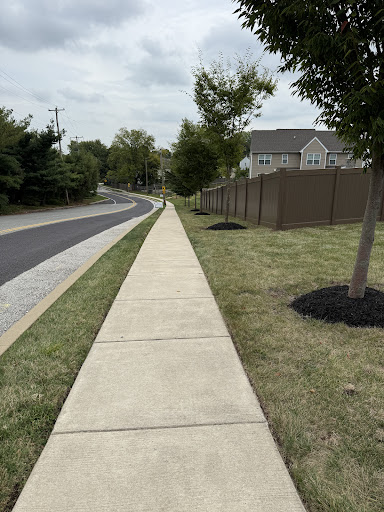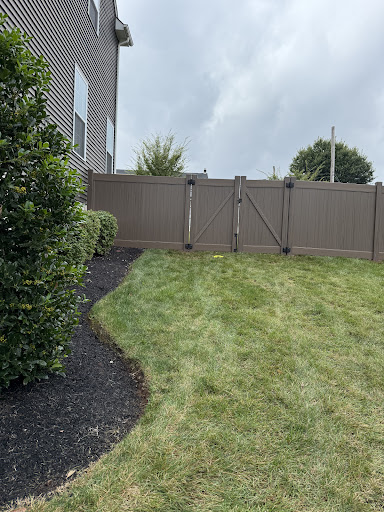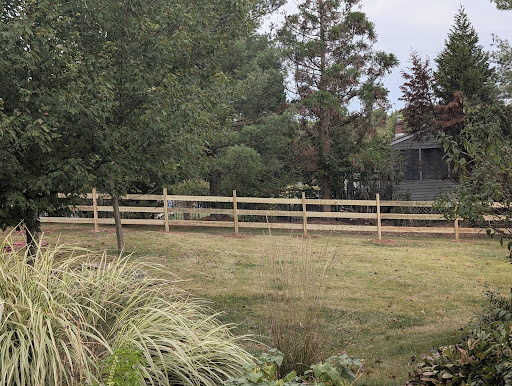Chain-link fencing is a versatile and widely used option for securing properties for residential, industrial, or recreational purposes. Known for its durability and cost-effectiveness, this type of fencing offers a practical solution for those needing to delineate boundaries or enhance security without obstructing views. However, while chain-link fencing brings significant benefits, it also has limitations, including aesthetics and privacy concerns. This article will explore the pros and cons of chain-link fencing, providing a comprehensive guide to help you determine if it is the right choice for your fencing requirements.
Benefits of Choosing Chain-Link Fencing
One of the primary advantages of chain-link fencing is its cost-effectiveness. It is often significantly cheaper than other fencing materials such as wood, vinyl, or iron in terms of initial installation and long-term maintenance. This affordability makes chain link a particularly attractive option for larger properties or lengthy perimeters where the total fencing cost can quickly accumulate. Its economical nature does not compromise its durability, providing a budget-friendly solution without sacrificing quality.
Durability is another key benefit of chain-link fencing. It is designed to withstand harsh weather, including heavy rain, snow, and extreme temperatures, making it a lasting investment for any property. The steel wire is treated with zinc to prevent rust, and optional vinyl or polyester color coatings can also enhance its resistance to weathering. This robust construction ensures that the fence will maintain its structure and functionality over many years with minimal need for repairs.
Chain-link fencing’s low maintenance requirement further enhances its appeal. Unlike wood fences that require periodic staining or sealing, chain-link fences need little more than occasional cleaning to keep them looking new. This can usually be accomplished with just soap and water or, for tougher stains, a simple brushing. This ease of maintenance helps save not only time but also money, as there is no need for frequent, costly treatments or repairs.
Chain-link fences offer excellent visibility, crucial in many commercial and recreational settings. The open diamond pattern of the weave allows for clear sightlines, ensuring that activities within the enclosed area can be monitored easily. This aspect of transparency is essential for safety in places like schoolyards and public pools. For businesses, it enables security personnel to observe the perimeter without obstructions, adding an extra layer of security to the property.
Potential Drawbacks of Chain Link Fencing
One of the most common criticisms of chain-link fencing is its aesthetic appeal, or lack thereof, to some people. Often associated with industrial settings due to its utilitarian design, chain-link can appear harsh and unwelcoming in residential areas where more decorative fencing is preferred. While functional, its standard metallic grey finish may not blend seamlessly with more landscaped or ornate environments, potentially detracting from a property’s overall look and feel.
Another drawback is the limited privacy offered by standard chain-link fencing. While excellent for security surveillance and maintaining visibility, its open mesh design does little to shield properties from the prying eyes of passersby or neighbors. For homeowners or businesses that require more seclusion, additional investments in privacy slats or screens are necessary, which can offset some of the cost benefits of choosing chain links initially.
Furthermore, while chain link is durable and generally resistant to environmental factors, it is not indestructible. It can be susceptible to damage from severe impacts, such as those from heavy fallen branches or vandalism. Repairs, though typically straightforward, can become frequent if the fence is in an area prone to such occurrences. This might lead to unexpected maintenance costs over the fence’s lifespan.
Lastly, chain-link fencing can sometimes be perceived as less secure than solid barriers. Despite its durability and effectiveness at defining boundaries, the ease with which it can be climbed could be a concern, especially in settings requiring heightened security. Additional measures such as barbed wire or angled extensions can mitigate this issue but can also add to the overall costs and alter the fence’s visual profile.
Installation and Maintenance Considerations
Installing chain-link fencing is relatively straightforward, which is a major reason for its popularity among various properties. The process involves securely setting posts into the ground and attaching the mesh to these posts with fittings. The posts must be anchored deeply enough to withstand environmental pressures, such as strong winds and soil shifts, which can affect the stability and alignment of the fence over time. A properly installed chain link fence can last many years with minimal maintenance.
Maintaining a chain link fence is typically less labor-intensive than caring for other types of fencing. Regular maintenance usually includes:
- Inspecting for and addressing rust spots (if the fence is not vinyl-coated) to prevent spreading.
- Checking and tightening the fence’s hardware ensures everything is secure, especially after weather events.
- Cleaning the fence periodically with soapy water to remove dirt and debris helps maintain its appearance and integrity.
- Properly repairing any damaged sections will prevent larger breaches, and it is usually as simple as replacing a section of the mesh.
Chain-link fences are easy to maintain and repair. If a section becomes damaged, only the affected section needs to be replaced. This can be done by cutting out the damaged part and weaving in new mesh. This modularity not only makes repairs straightforward but also cost-effective.
However, it’s important to note that the quality of the initial installation can significantly influence the longevity and performance of chain link fencing. Skilled installation by professionals ensures that the fence is set up to withstand its intended uses and the rigors of its environment. For those looking to install a chain link fence, partnering with a reputable installer who can provide quality materials and craftsmanship is essential. This ensures the fence functions as needed and lasts as long as possible with minimal upkeep.
Chain Link Fencing for Security and Privacy
chain-link fencing is a popular choice for security measures due to its durability and the effective boundary it creates. With its interlocked steel wires, the fencing structure is robust enough to deter casual intrusion and clearly demarcates property boundaries. This transparency ensures that there are no hidden corners for unauthorized persons to hide, making it an excellent option for areas where surveillance is necessary. Additionally, the fencing can be customized with various heights, making it more difficult for intruders to climb over.
Despite its open structure, chain-link fencing can also be adapted to enhance privacy. This is particularly beneficial in residential areas or commercial settings where certain operations need to be screened from public view. Privacy slats or strips can be inserted into the chain-link mesh, which not only blocks visibility but can also add a touch of aesthetic appeal to the fence. These slats come in various colors and materials, allowing for customization that can match the property’s exterior design or corporate branding.
Enhancing the security of chain-link fencing can involve several additional modifications. Options include installing barbed or razor wire at the top of the fence to discourage climbing. For heightened security requirements, one can also integrate motion sensors and cameras that work well with the unobstructed view provided by the chain link. Such integrations make it a formidable barrier against trespassing and enhance overall security protocols for the property.
However, the use of chain-link fencing must be carefully planned to balance security and privacy needs with local regulations and the overall purpose of the fence. In some cases, the appearance of high-security modifications like barbed wire may not be suitable or may require specific permissions. Consulting with fencing professionals can provide guidance on how best to utilize chain link fencing while complying with legal and community standards.
Comparing Chain Link to Other Fencing Options
When considering fencing options, it’s important to compare chain-link fencing to alternatives like wood, vinyl, and wrought iron to understand its advantages and limitations. chain-link fencing stands out for its cost-effectiveness and durability. It’s generally less expensive than other types of fencing in terms of both initial installation costs and long-term maintenance. This makes it an attractive option for large areas where the amount of fencing needed could make other materials prohibitively expensive.
Chain link also offers significant advantages in terms of durability and maintenance. Unlike wood, which can suffer from rot, or iron, which may require regular painting and rust prevention, chain link is designed to withstand harsh environmental conditions with minimal upkeep. The galvanized or vinyl-coated finishes on chain-link fences are designed to resist weathering and corrosion, making them ideal for climates that experience varied weather patterns.
However, when aesthetics are a primary concern, wood or wrought iron might be preferred over chain link. Wood offers a warm, classic look that can enhance a property’s curb appeal and can be painted or stained to match any style. Wrought iron, while more expensive, provides a high-end, sophisticated look that offers strength and durability. Both of these options allow for more customization in design compared to the more utilitarian appearance of chain links.
It’s essential to consider the property’s specific needs when choosing a fencing material. For instance, wooden fences provide better privacy due to their solid construction, making them ideal for residential areas. Wrought iron is preferable for decorative security, while vinyl offers a clean look with privacy to wood but with less maintenance. While not as visually appealing as these alternatives, chain link provides unbeatable functionality and cost efficiency, particularly suited for large commercial spaces or as a temporary measure during construction projects.
Contact Montco Fence
Montco Fence is here to help those considering chain-link fencing or any other fencing needs. With years of experience and a commitment to quality and customer satisfaction, Montco Fence can guide you through the selection process, ensuring you choose the best fencing option for your property. Contact us today if you’re looking for professional installation or maintenance tips or simply need to discuss your options; our experts are ready to provide you with the information and services you need.
















